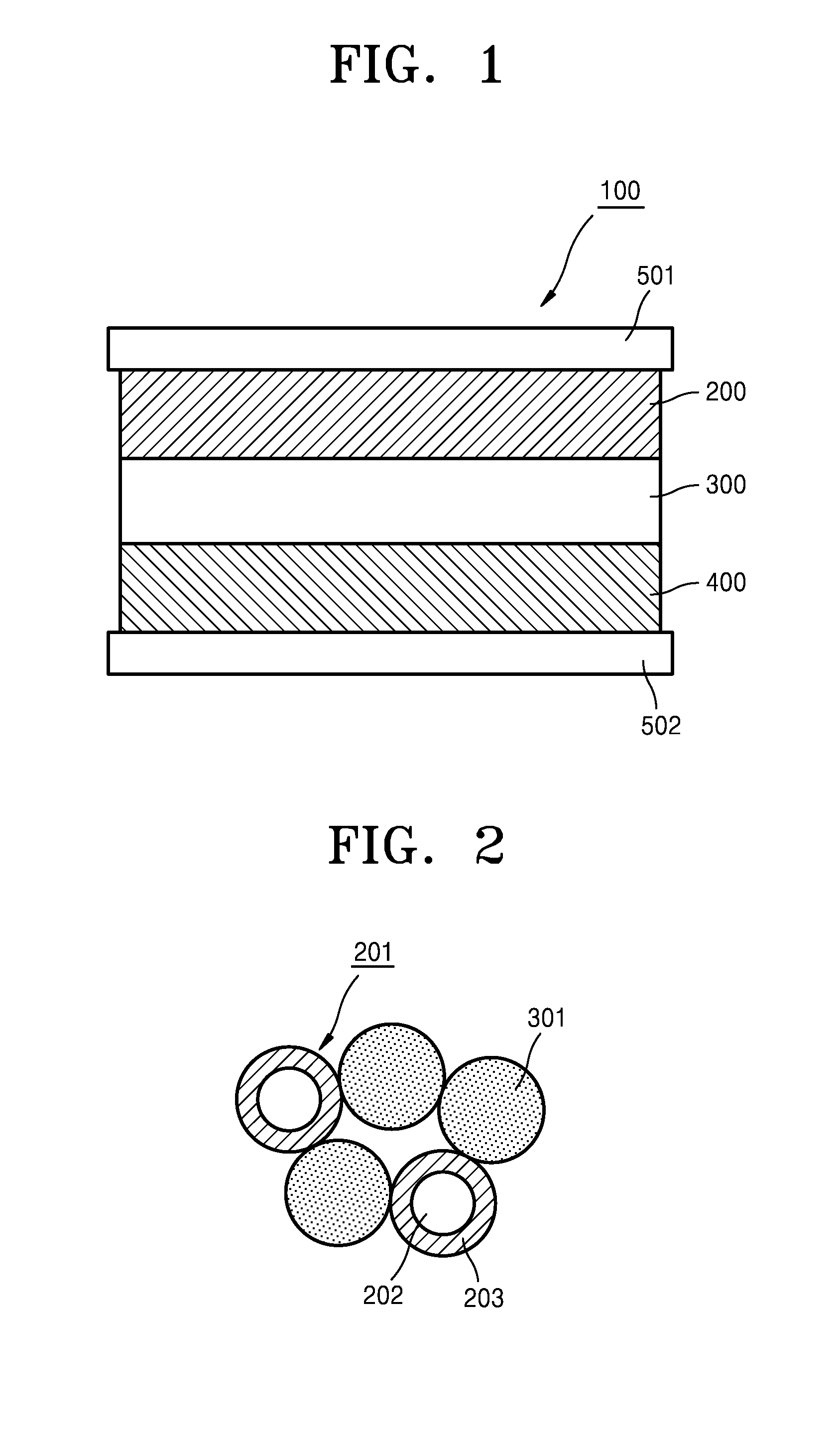Lithium battery and method of preparing cathode active material for the lithium battery
- Summary
- Abstract
- Description
- Claims
- Application Information
AI Technical Summary
Benefits of technology
Problems solved by technology
Method used
Image
Examples
example 1
[0092]Li2S and P2S5 (at a mole ratio of 80:20) were mixed using a mechanical milling method (an “MM” method) to obtain a sulfide-based solid electrolyte. Here, an average particle diameter of the sulfide-based solid electrolyte was 10 μm.
[0093]As starting raw materials of a coating layer material, 0.4 g of a 1 molar (M) solution of lithium methoxide in methanol, 0.34 g of zirconium (IV) propoxide, and 0.11 g of phosphorous oxide (P2O5) were prepared, and the starting raw materials were mixed in a mixture solvent including isopropanol, ethylacetate, and water for 30 minutes to obtain a mixture solution. 5 g of LiNi0.8Co0.15Al0.05O2 (hereinafter, also referred to as “NCA”) as a core of the cathode active material was added to the mixture solution to obtain a mixture. The mixture thus obtained was heated and stirred at a temperature of 40° C. to evaporate the solvent and dry the mixture. The drying may be performed by irradiating ultrasonic waves to the mixture, and thus a cathode acti...
example 2
[0098]A lithium battery was prepared in the same manner as in Example 1, except that a titanium (IV) propoxide was used instead of a zirconium (IV) propoxide among the starting raw materials of the coating layer material.
PUM
 Login to View More
Login to View More Abstract
Description
Claims
Application Information
 Login to View More
Login to View More - R&D
- Intellectual Property
- Life Sciences
- Materials
- Tech Scout
- Unparalleled Data Quality
- Higher Quality Content
- 60% Fewer Hallucinations
Browse by: Latest US Patents, China's latest patents, Technical Efficacy Thesaurus, Application Domain, Technology Topic, Popular Technical Reports.
© 2025 PatSnap. All rights reserved.Legal|Privacy policy|Modern Slavery Act Transparency Statement|Sitemap|About US| Contact US: help@patsnap.com



